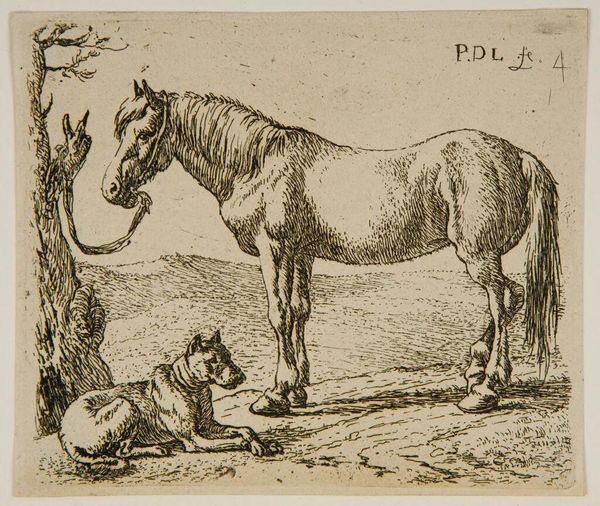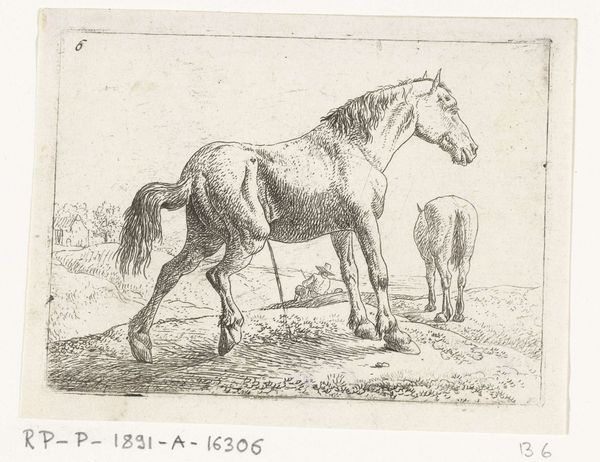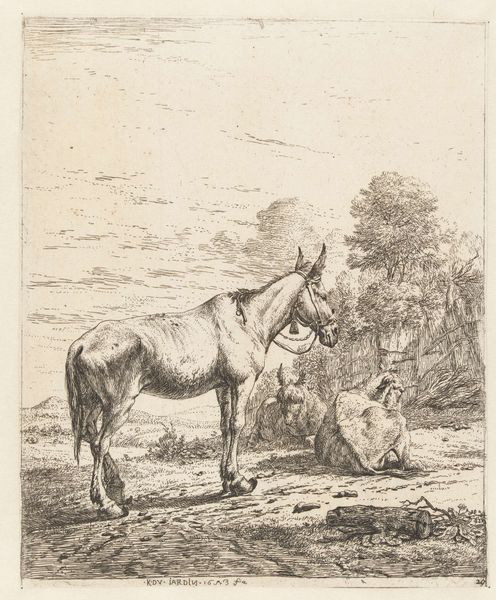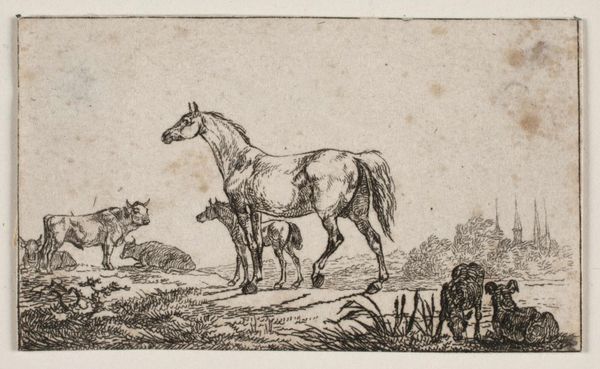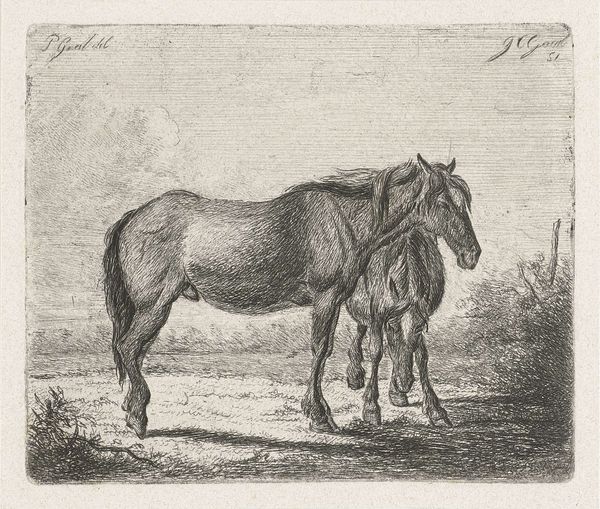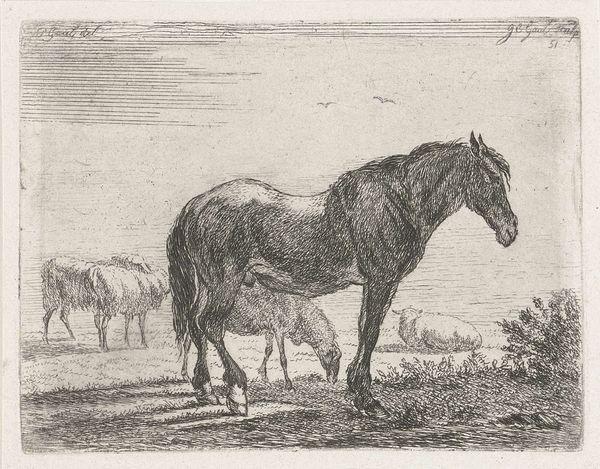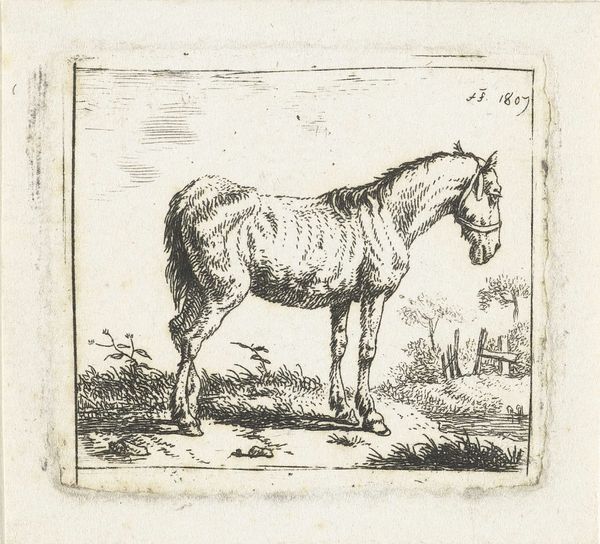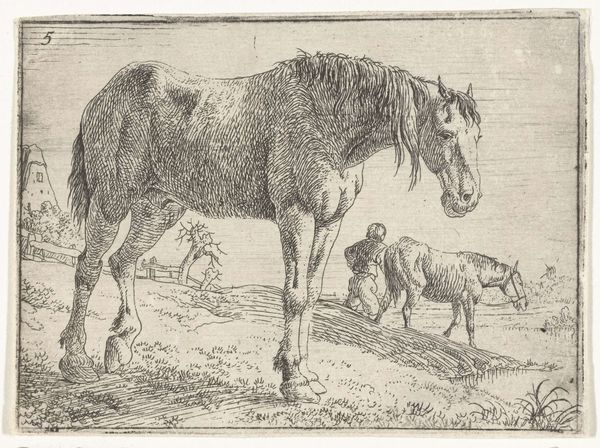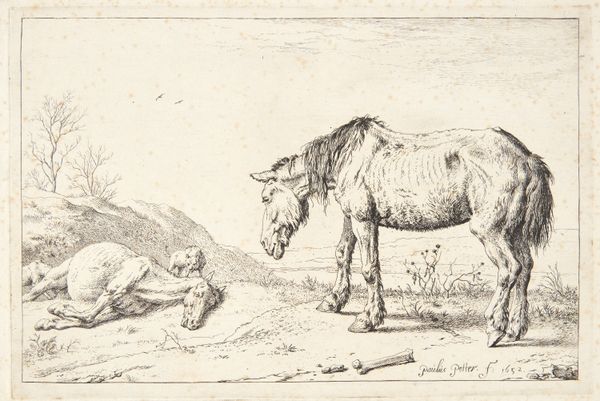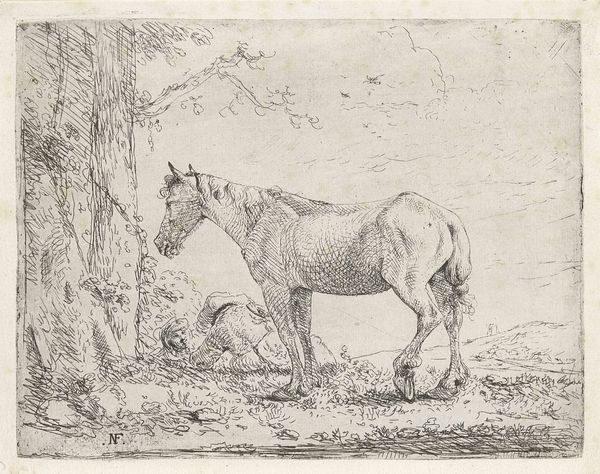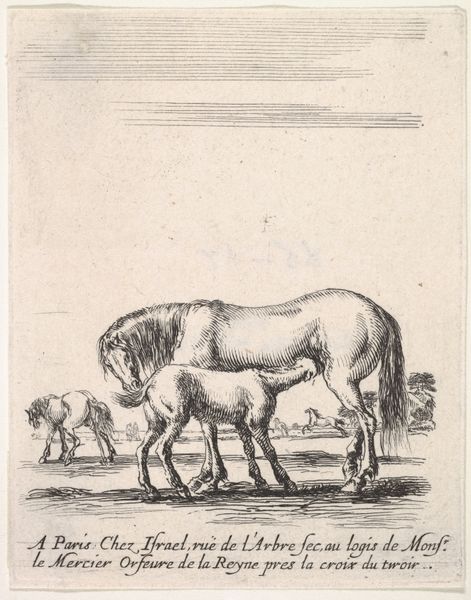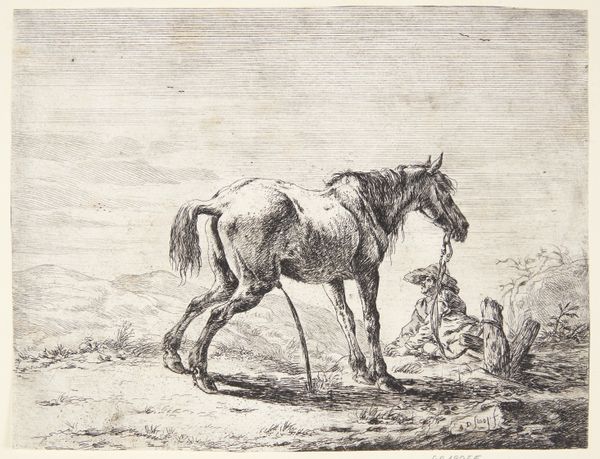
etching
#
animal
#
dutch-golden-age
#
etching
#
dog
#
landscape
#
horse
Dimensions: height 82 mm, width 98 mm
Copyright: Rijks Museum: Open Domain
Curator: Standing before us is "Horse and Dog in a Meadow" by Pieter Bodding van Laer, an etching dating between 1609 and 1642. Editor: It feels like a quiet afternoon, almost melancholic. The etching’s starkness emphasizes the stillness. Curator: Indeed. Laer, though Dutch, spent a significant portion of his career in Rome. It's worth noting how this print participates in a broader Dutch tradition of animal and landscape studies, appealing to a rising urban merchant class keen on portraying an ordered and understood nature. Editor: The horse, tethered to a frail tree, and the resting dog—they’re almost allegorical, archetypes. Horses often represent vitality and untamed nature, while dogs are seen as loyalty, domestication. Their pairing here...it suggests a truce between wildness and order, wouldn't you agree? Curator: I think your interpretation rings true. It can also be seen as an appeal to city dwellers who yearn for nature, but only as an object of their property, their cultivated taste. And there are definite allusions in the contrast in sizes – a dog being so small, compared to the large stature of the horse…it denotes how animals were essential to that golden age for travel, safety, trade. Editor: And what about the artist's choice of technique? The fine, precise lines of the etching... do they lend themselves to expressing details? Or the broader feeling that you get from an interaction, a moment between dog, horse, and perhaps the horse’s master nearby… Curator: The use of etching is essential. The etching process would enable printing shops and publishing houses to make more impressions and share artwork more readily than if this piece had been made into, say, an oil painting. This allowed more ordinary members of Dutch society to experience and participate in artwork, not just elite patrons who commission oil works for themselves. Editor: So it is as a medium also representative of change in artistic value itself, which shifted when accessibility increased through reproducible imagery? This has given me a new avenue through which to appreciate "Horse and Dog in a Meadow", by Laer, here at the Rijksmuseum. Curator: It’s enlightening how these familiar pastoral scenes, viewed through diverse perspectives, continue to offer us so much about a society's values.
Comments
No comments
Be the first to comment and join the conversation on the ultimate creative platform.
